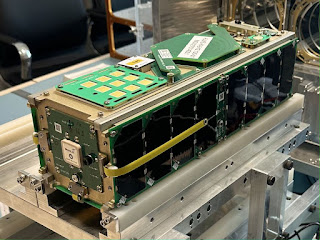Well,
Back in the midst of time, I installed an MA6B from Cushcraft - well, MFJ as they were. Sadly now defunct.
It's been a bit "out of bonk" recently with some SWR swings and I assumed I'd got a feeder issue.
I brought the antennas down and replaced the feeder from the antenna back to the shack - no change.
I then thought it might be the "junction box" in the centre of the antenna which is just that - there's no balun. The box seems to have deteriorated in the sunshine, but electrically it looked ok. Not that then, I don't think.
I found the SWR on 10M (28MHz) was the worst, and eventually I ended up taking the traps off the elements one by one and testing them with the spectrum analyser.
I found one of the CT1 traps to have only one "dip" rather than the expected two - so I think this is the route of my problems. Luckily I have some spare parts so I've just swapped it for a new one.
I'll take it to bits soon and see if I can find out what's actually broken.
Here are the SWR curves after I finished, mainly for the record:












